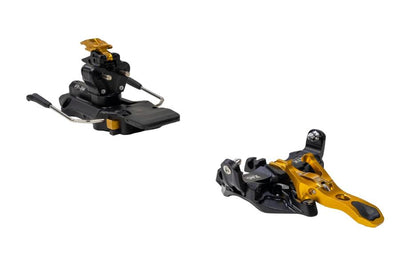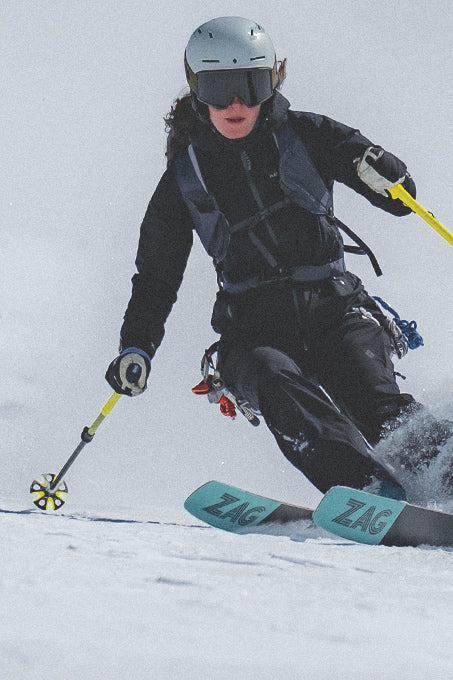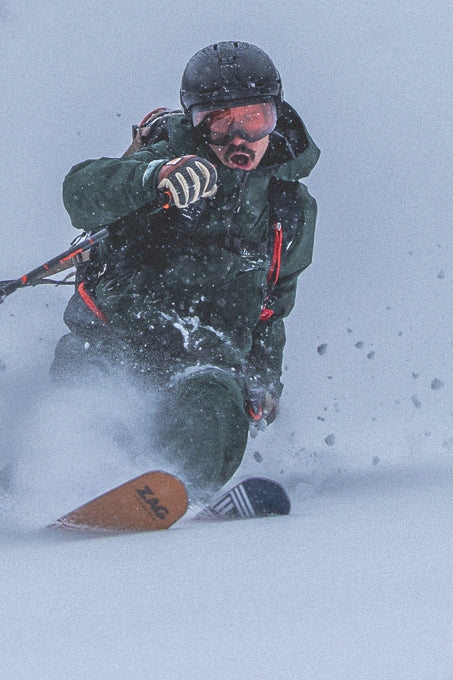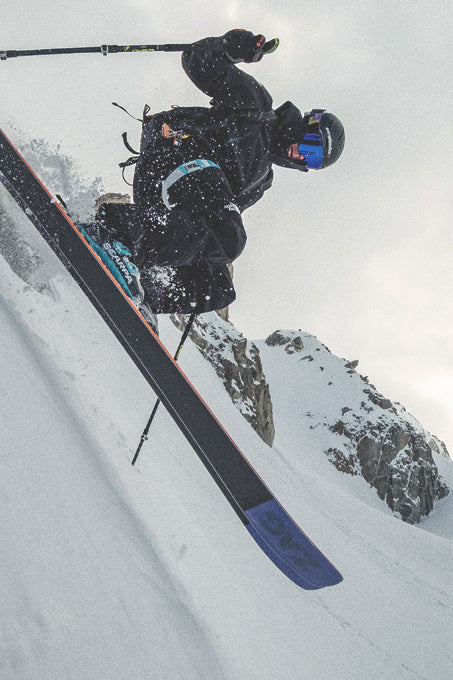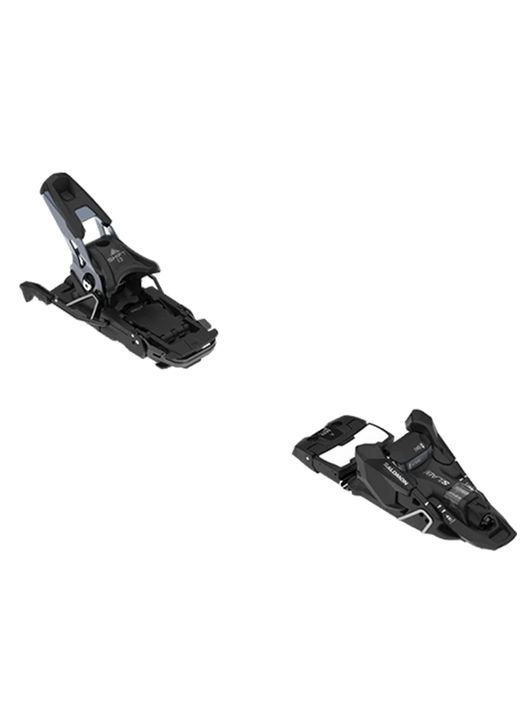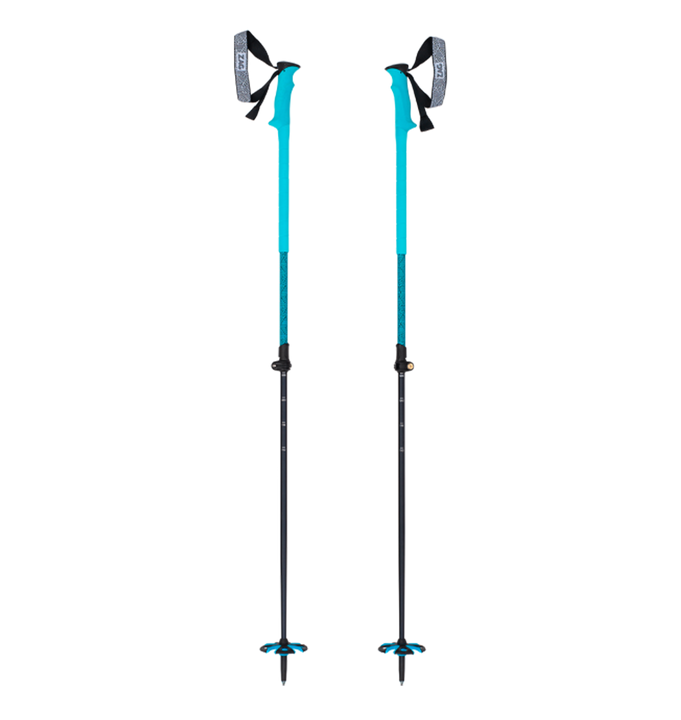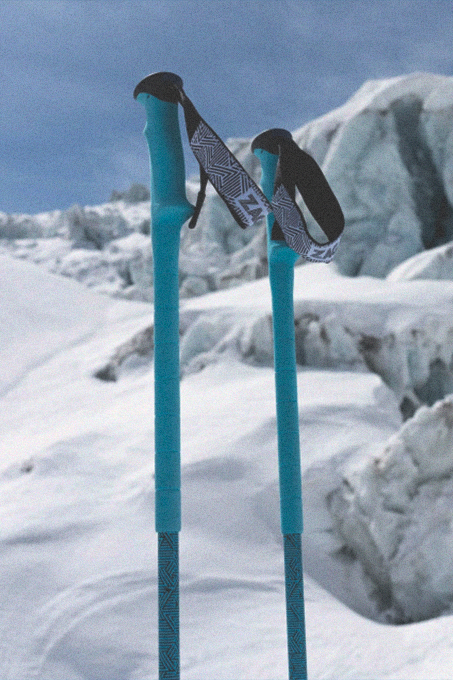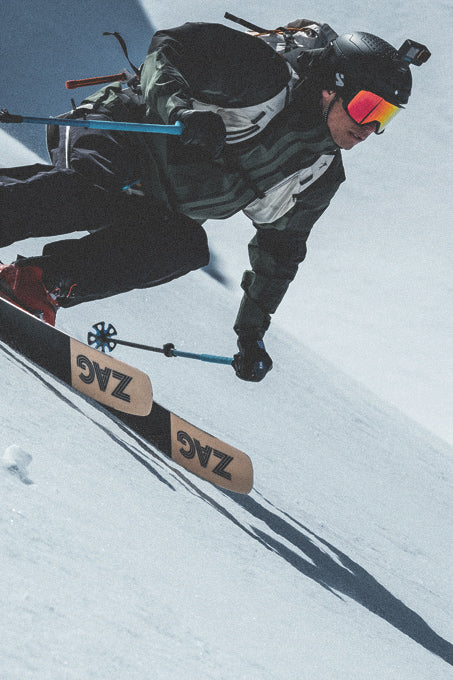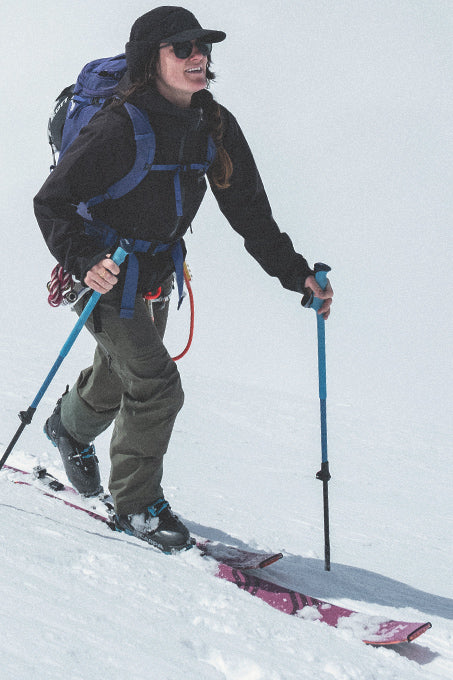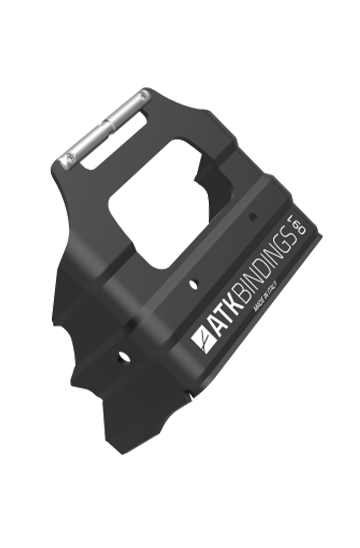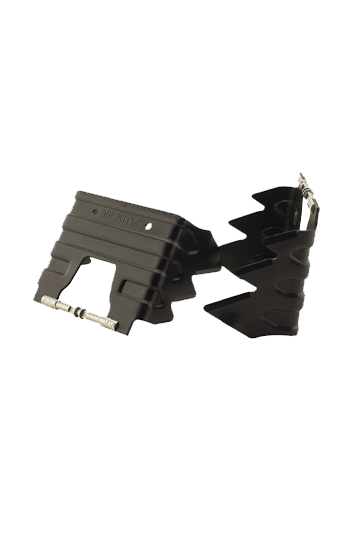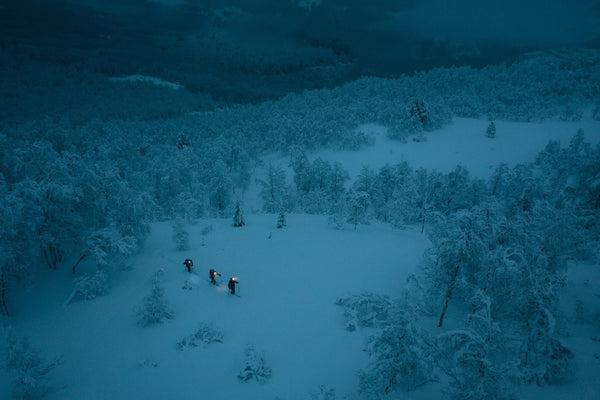Tutorial: how to start Touring skiing?
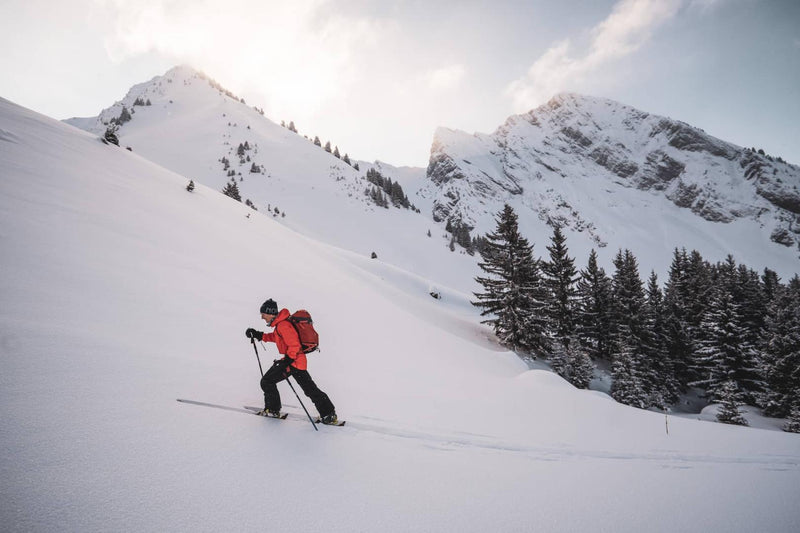
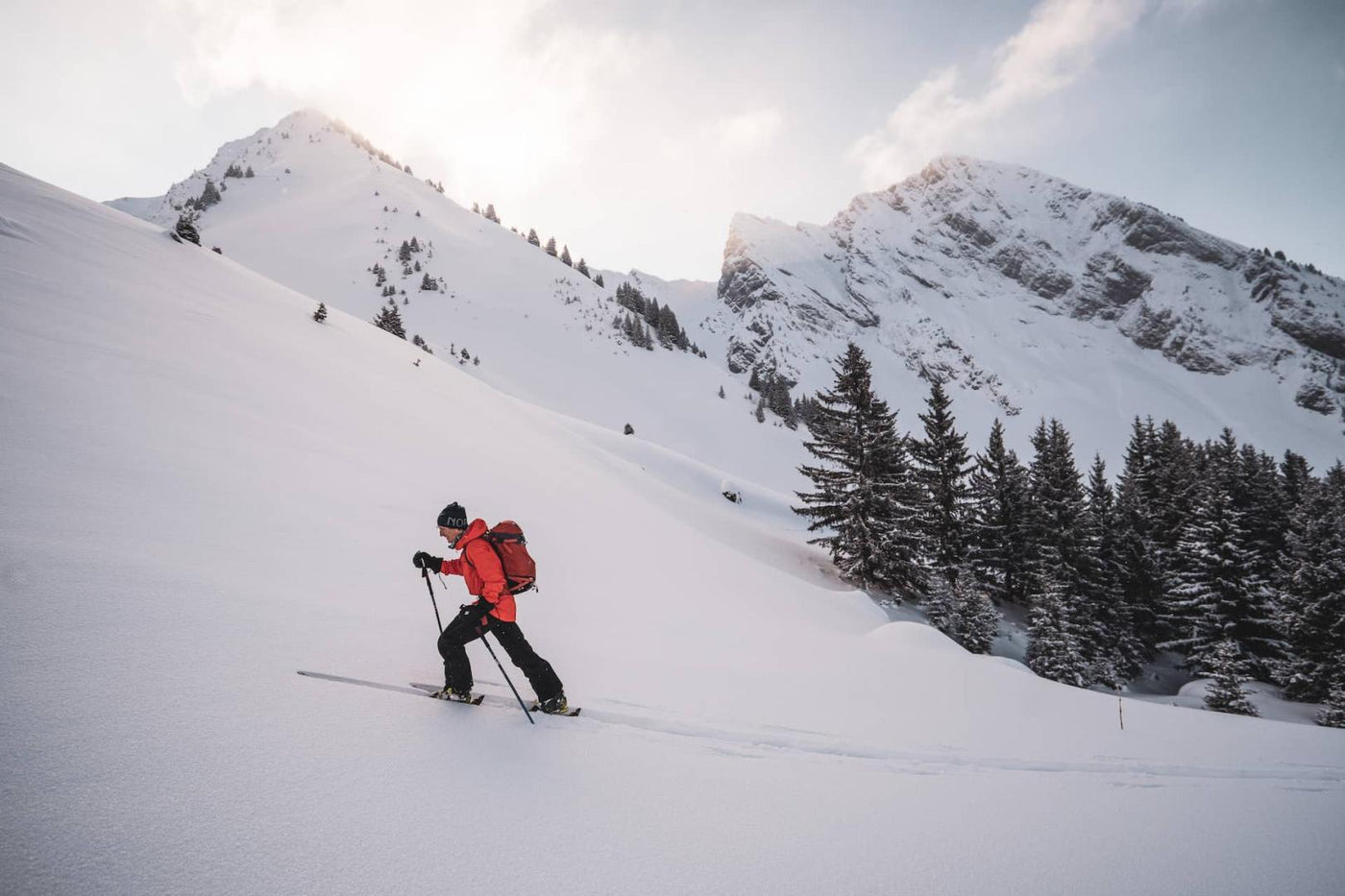
Touring skiing is a fast-growing trend in mountain sports, and even more so after the COVID 19 crisis and the closure of ski lifts for the 2019/2020 season. Accessible, a source of sensations, in a preserved environment, it allows you to escape conventional sports and discover a new approach to the mountains.
However, like all mountain sports, it's a high-risk sport, and it's important to know the specifics to get started safely and in good conditions. We've found that it's sometimes difficult for an outsider to know how to start Touring skiing safely, with the right equipment and sufficient knowledge. So, with our guide Pierre Masbou aka Pierro, we're going to show you how.
Pierre Masbou
My name is Pierre Masbou, I'm an aspirant guide and ski instructor by training. I currently work as a Gendarme secouriste - trainer at the Gendarmerie's national ski and mountaineering center (CNISAG, center de formation pour le secours en montagne). I started mountain and Touring skiing in my native mountains, the Pyrenees. A famous quote that has stayed with me since my early days: "The mountaineer is a man who leads his body to where, one day, his eyes have looked...
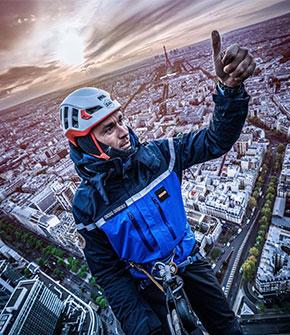
The history of Touring skiing
Touring skiing was invented almost 4000 years ago by our Scandinavian friends. To be able to stalk game over long periods, they found it wise to do so on skis.
Equipped with seal or elk skins, they were not only able to move forward, but also to climb slopes. Recognized as useful, this invention was adapted for military use, but also for explorers in the early 19th century.
From one evolution to the next, Touring skiing was first a means of locomotion, then a leisure activity. There's no doubt that an evolution in materials and attitudes has opened up the sport to the many as we know it today.
It's with this evolution in equipment that we're going to be able to differentiate the more classic Touring ski from the more contemporary Freerando ski. In fact, although similar, these two types of mountain skiing are quite different.
A useful link for those curious about the history of Touring skiing.
Touring or freerando skiing?
Touring skiers in particular are looking for performance in lightweight equipment. Skiing in the mountains requires lightweight, reliable equipment. This sport perfectly combines physical exertion on the way up and the pleasure of skiing in grandiose landscapes, a source of unique sensations on the way down on immaculate virgin snow. An undeniable advantage: this sport can be practised anywhere as soon as the first snow falls! Forget expensive lifts and crowded pistes, Touring skiing lets you discover the real face of the mountains, with the pleasure of leaving your mark and having impromptu encounters with wildlife at the bend in a ridge or rock face.
Another discipline, freerando skiing, is optimized for downhill thrills. If you want to get off the beaten track and dust your nose with fresh snow, this type of ski is for you! As a wide, maneuverable ski, you'll be able to concentrate on downhill skiing, while accepting that you'll have to make a slightly greater physical effort on the ascent than with a Touring ski. With the help of the existing infrastructure, you'll get away from the slopes to ride a trackless slope, where you'll feel the sensation of speed and freedom as you ride.
Pierro's words:
"Indeed, we can distinguish between Touring skiing and this new practice called freerando. The equipment used in the two practices is not necessarily identical. Touring skiing is more about discovering the environment on the way up and on the way down. It requires a substantial physical effort, which doesn't have to be made using the lifts at the highest points of the ski resorts, in order to climb short distances on skins and get the most out of a long descent in good condition. This requires equipment more suited to the descent and therefore heavier. As a practitioner of both disciplines, the two are complementary.
Which skis should you choose to start Touring ?
So let's start by defining the criteria for choosing a pair of Touring skis. You'll need to make an initial choice as to how you want to develop your Touring skis. We're going to differentiate between Touring skis focused on uphill performance (ADRET range) and Touring skis for pleasure, where the right balance between weight, performance and pleasure is to be found ( UBAC or SLAP range). Skis are judged on their degree of versatility, accessibility, stability, climbing ability, descending ability and maneuverability.
The skis in the ADRET range are highly technical products. They are ultra-light and therefore require a good technical background to master them. The UBAC range, on the other hand, is a perfect compromise between lightness on the ascent and performance on the descent. This range of skis is therefore better suited to novice Touring skiers, especially with the medium-width UBAC 89 and UBAC 95 models.
In concrete terms, we're going to talk about a ski:
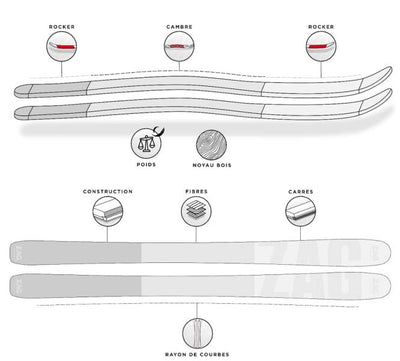
You'll need to choose a ski that's right for you, based on your level of skiing, degree of mountain experience, type of outing (lots of vertical drop, multi-day raids, outings on all types of snow) and your ambitions.
How to choose your Touring ski Bindings ?
Bindings with "low tech" inserts
These are the most popular Bindings on the market. Lighter and easier to handle, they offer less adjustability but undeniable weight savings. Different brands and models offer different levels of security. Generally speaking, the lighter the Binding you choose, the less security you'll have when you take your shoes off.
The most important factors to take into account are the lateral and pull-out DIN settings (sometimes adjustable over a range from 4 to 12, for example, or fixed at 6 or 8 on very light bindings). We advise skiers new to Touring to start with a Binding with an adjustable DIN value to maximize safety.
The use of ski stops is also a significant improvement in comfort and safety.
Like our Binding , co-branded with Italian brand ATK: the Raider 10.
Hybrid" Bindings
Hybrid" freerando Bindings offer all the safety and flexibility of an alpine Binding with the added option of hiking.
The focus is on downhill performance and safety. It's bulkier and heavier than the classic Touring Bindings with low-tech inserts, but it's more versatile and generally safer for the skier.
It's a good compromise between the Binding with inserts and the Binding with plate, weighing between 1000 and 1700 grams per pair, and sometimes with DIN and TÜV certifications that standardize release values to provide that famous safety found in alpine skiing. Here are a few examples: Salomon shift, Fritschi tecton 13, Marker duke PT/ Kingpin...
At ZAG, we mainly recommend Diamir tecton 12 and Salomon SHIFT, which are TÜV-certified and therefore provide maximum safety for the skier. These mounts are often made on our UBAC, SLAP or HARFANG ranges.
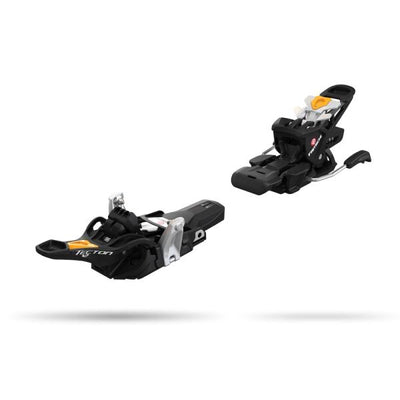
Today's offering focuses mainly on Bindings with inserts and hybrids.
Nota bene: make sure that the base of the Binding and the width of the ski stop are compatible with the width of the ski. We prefer a hybrid Binding for a freerando ski and a Low Tech Binding for a Touring ski. Now that you've got a clearer idea of which ski and which Binding to choose, depending on what you want to do, let's get down to the practical side of things!
How to put on/off Touring skis?
To put on a low-tech Binding , you need to open the Binding jaw, align your shoe with the ergos and press the spring so that the jaw closes. Once this is done, pull on the front latch to lock the Binding in "walking" mode, thus preventing the shoe from slipping off during ascent.
Then remember to put your heel in the uphill position and adjust your wedges. In principle, the first wedge is sufficient for most slopes. If you're skiing on relatively flat terrain, you don't need to set your wedges, as your heel can touch the ski directly. As for ski-stop adjustment, on a Touring Binding this is done by rotating your heel piece.
To remove the shoe, use your Pole to push the latch downwards, then turn your heel to the right or left to remove the shoe from the U.
Pierro's words:
"So, if the fitting has been done correctly, all you have to do is lay the boot flat on the ski between the two Bindings (front and rear), place the heel against the rear Binding (depending on the Bindings model, a gap of a few mm may be necessary) and then press down on the tip of the foot to activate the spring so that the jaws enter the boot's inserts. For this method to work, the rear wedge must be in the up position."
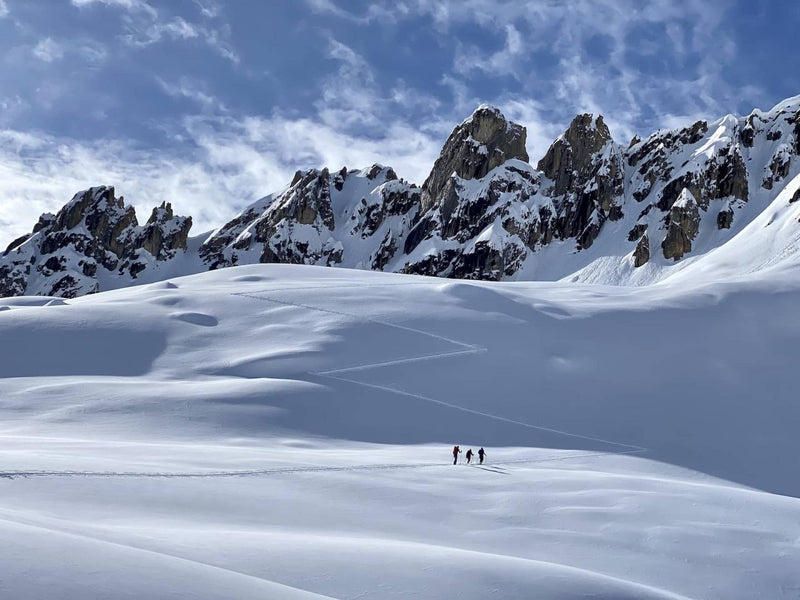
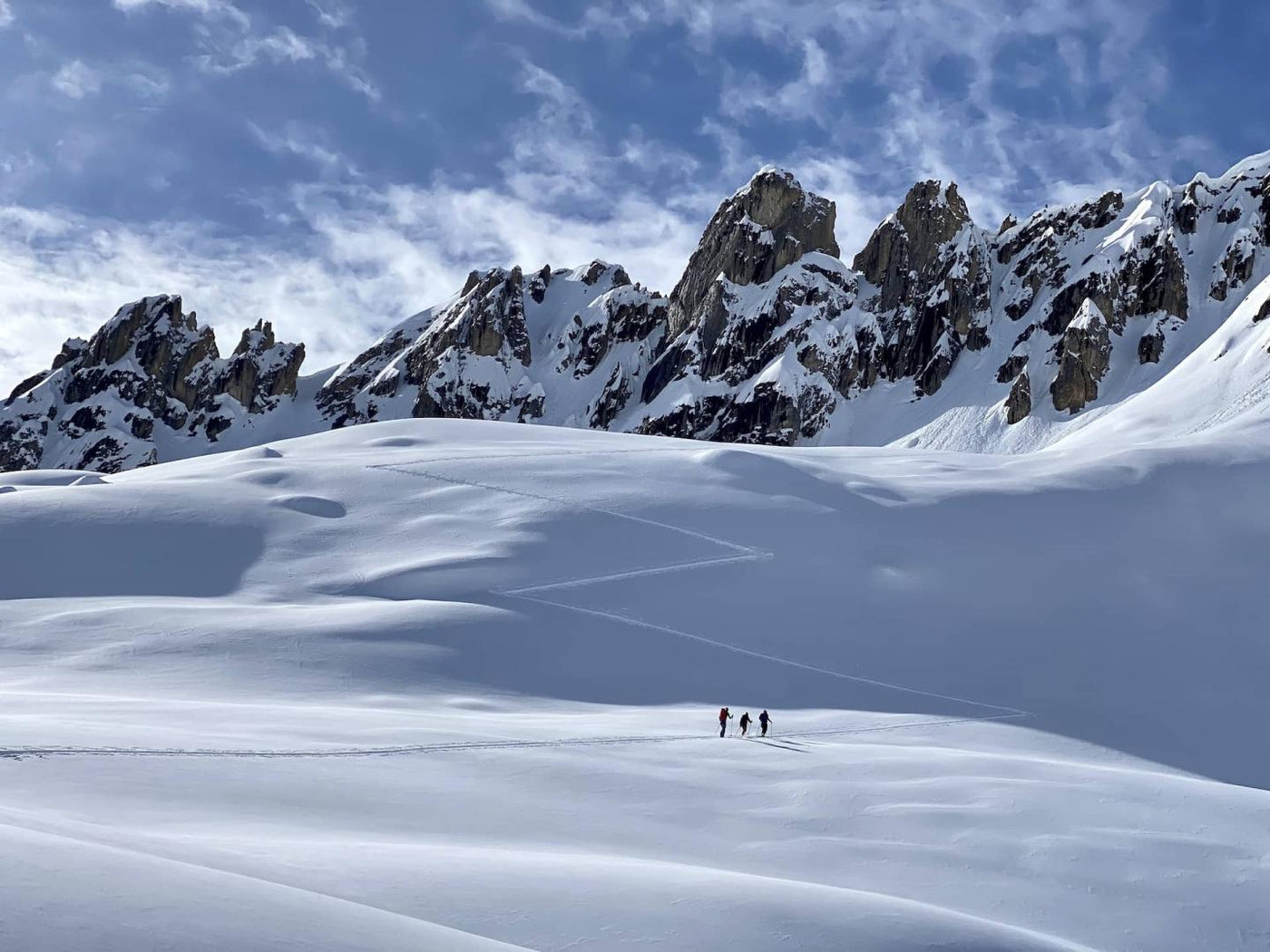
Going Touring : the conversion
You've probably already seen large zigzags on slopes in the snow. Each hairpin is called a conversion. The principle of the conversion is simple: when you're climbing, if you feel that the slope is too steep to be tackled head-on, you start a conversion. This method allows you to avoid tiring yourself unnecessarily.
Let's imagine you're going to make a conversion to the left:
You're going to open your arms (like the gentleman below), lift your upstream ski and rotate it to the left (don't hesitate to press hard so you can then do your weight transfer). Then load your weight on this leg and bend your downstream leg (in this case, the right), bend your knee and rotate your ski until it's parallel to the other one again. That's it, you're back on the Poles and off you go!
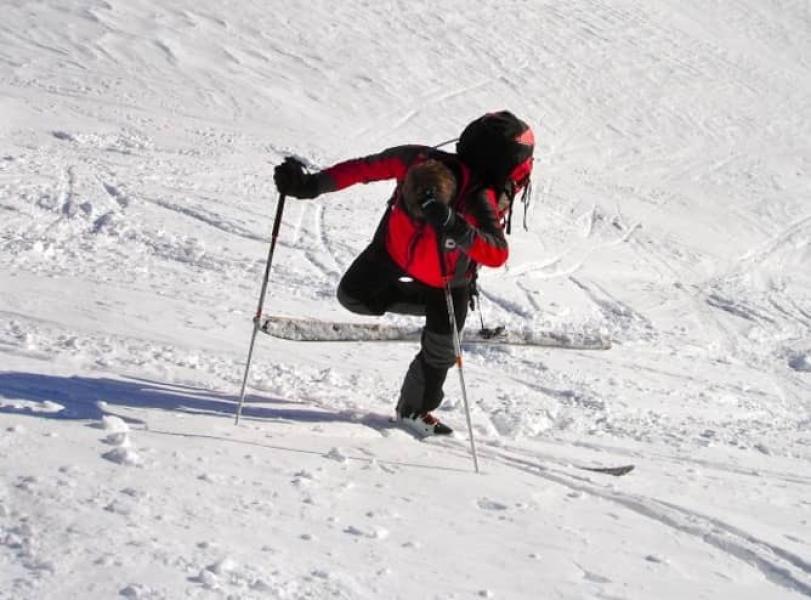
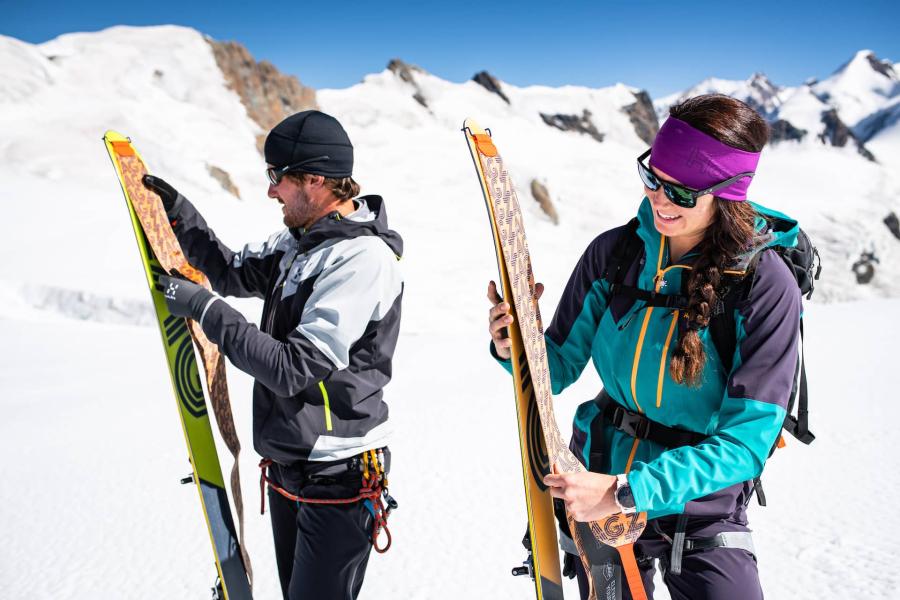
How do I put on my sealskins?
There are several types of skins on the market, but the principle is the same: to put on a Touring ski skin properly, place the ski heel on the ground, raise the ski vertically and thread the skin stirrup onto the tip.
Now comes the "technical" part, where you gently stretch and align the skin along the entire length of the ski. Be careful not to wrinkle the skin or make it protrude over the edges. You can then use the heel tensioner (some race skins don't have tensioners, so you can peel/peel without taking off your skis) to prevent the skin from coming off during ascent.
We distinguish between "race" seal skins (with a single turnbuckle at the front) and more classic skins (with a stirrup and a turnbuckle at the rear).
How do you tackle the descent on Touring skis?
Once you've reached your objective, taken the time to admire the view and break bread, it's time to think about coming back down. To do this, you'll first have to de-skive (i.e. remove the skins from your skis and put them in your bag).
Then, to get into descent mode, nothing could be quicker! Turn your rear Binding a quarter or half turn, depending on the model, so that the U is in line with your heel, and snap your foot together so that they fit properly!
And don't forget to unlock your front Binding , otherwise your knee could go through it in the event of a fall! You're ready to ride the pow!
How do I adjust my Touring ski Bindings ?
A well-adjusted Binding is one that is adapted to the length of your hulls and Binding , depending on your weight, will only release if too much pressure is applied. It's important to avoid triggering too quickly or not at all. Binding is measured in DIN. This unit of measurement allows you to adjust the Binding to your weight. Here you can rely on the AFNOR scale to set your Bindings.
If your technical skills aren't perfect, we'd still advise you to go to a specialized Touring ski store so that they can adjust your Bindings to your boot and your level! What's more, depending on the type of Binding and model, some additional adjustments may be necessary. All the more reason, then, to leave the adjustment to a professional if you're not familiar with every detail of your equipment.
Pierro's words:
"When climbing, we generally tend to load our body weight on the balls of our feet. As a result, the load is mainly applied to the front of the ski and can lead to a loss of skin grip. What I recommend instead is to press on the heels (this will pull on the calves a little at first) as the load will be distributed over the whole ski, allowing the skins to grip better.
On descent, it's really important that your Bindings are perfectly adjusted to your boot to avoid unintentional removal. If the DIN is not suitable, or on the contrary, if the setting is too hard, you won't be able to take off your shoes. In both cases, there's a risk of falling, which could surprise you or, even worse, hurt you!
In the event of ski loss, the Bindings can be fitted with leach or ski stops. If you had to choose, I'd recommend ski stops, as they're less dangerous in the event of an avalanche."
Now that you know more about the equipment to choose, let's focus on choosing the outing and planning the itinerary. Going Touring means preparing your outing in advance, and making sure your level is right for the chosen outing. If you find it difficult to define your technical or analytical level, you can call on the services of a mountain professional (mountain guide or ski instructor)."
And don't forget to unlock your front Binding , otherwise your knee could go through it in the event of a fall! You're ready to ride the pow!
